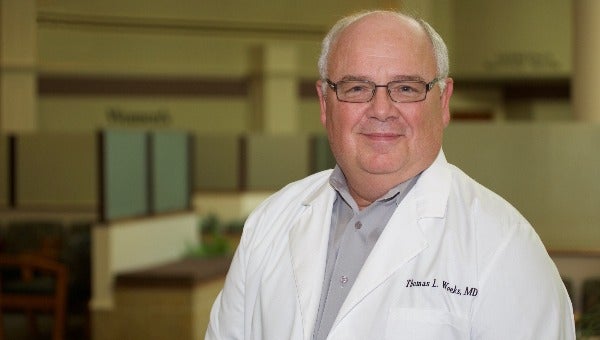Breast Health: A Three-Step Plan for Preventive Care
Published 11:05 am Friday, October 22, 2021

- Dr. Thomas Weeks, OB/GYN with Merit Health Medical Group
The following is provided by Merit Health Medical Group.
As most are aware, October is National Breast Cancer Awareness Month, a time to raise awareness about the impact of breast cancer. The thought of having breast cancer can be frightening, which makes it tempting to avoid this sensitive subject. But being proactive is a woman’s best bet in the fight against breast cancer.
Routine preventive care is the best way to keep you and your breasts healthy since the detection of breast cancer at its earliest stages provides the greatest opportunity for successful treatment.
THE THREE-STEP PLAN
Step 1: Breast Self-examination (BSE)
All women, ages 20 and older, should perform breast self-exams to familiarize themselves with their breasts so any changes are more quickly identified. BSE should be done regularly at the same time each month. Changes may include:
Development of a lump, swelling of the breast, skin irritation or dimpling, nipple discharge other than breast milk, or other nipple abnormalities (pain, redness, or turning inward)
If any of these changes are noticed, see your health care provider as soon as possible for evaluation.
Step 2: Clinical examination
“A breast examination by a doctor or nurse trained to evaluate breast problems should be part of a woman’s physical examination,” said Dr. Thomas Weeks, OB/GYN with Merit Health Medical Group. “A clinical breast examination is very similar to the procedure for breast self-examination (BSE). Women who perform BSE regularly will be prepared to ask questions and have any concerns addressed during a clinical exam.”
The American College of Radiology recommends annual mammograms starting at age 40, with no upper age limit as long as the woman is in good health. Different guidelines apply to women at higher risk. A screening mammogram can help detect breast cancer in its earliest and most treatable stages.
Step 3: Mammography
Mammography is a low-dose x-ray of the breasts and is the most common imaging technique. Mammography can detect cancer before a lump becomes large enough to be felt.
For women of average risk, the American College of Radiology recommends annual mammograms starting at age 40, with no upper age limit as long as the woman is in good health. Different guidelines apply to women at higher risk. A screening mammogram can help detect breast cancer in its earliest and most treatable stages. Women who may be at increased risk for breast cancer should talk with their health care provider about having their mammograms at an earlier age or more frequently.
The mammography department at Merit Health River Region offers 3D mammography exams. Utilizing advanced breast tomosynthesis technology, these exams are clinically proven to significantly increase the detection of breast cancers, while simultaneously decreasing the number of women asked to return for additional testing. The department is accredited by the American College of Radiology and the registered mammography technologists that perform the mammograms have over 34 years combined experience.
If you would like to schedule a mammogram, or have questions about this important breast health procedure, please call (601) 883-5016.
To further support breast health intervention, if it is determined that a breast biopsy is needed, our 3D breast biopsy process is streamlined from start to finish – with real-time imaging for instant verification and automated post-biopsy specimen handling, all in one room. More confidence in sample verification allows for fast biopsy procedures, potentially saving an average of 10 minutes per procedure. Faster procedures mean less time under compression for patients, which can result in a more positive patient experience.
Disclaimer: Remember that this information is not intended to replace the advice of your doctor, but rather to increase awareness and help equip patients with information and facilitate conversations with your physician that will benefit your health.





